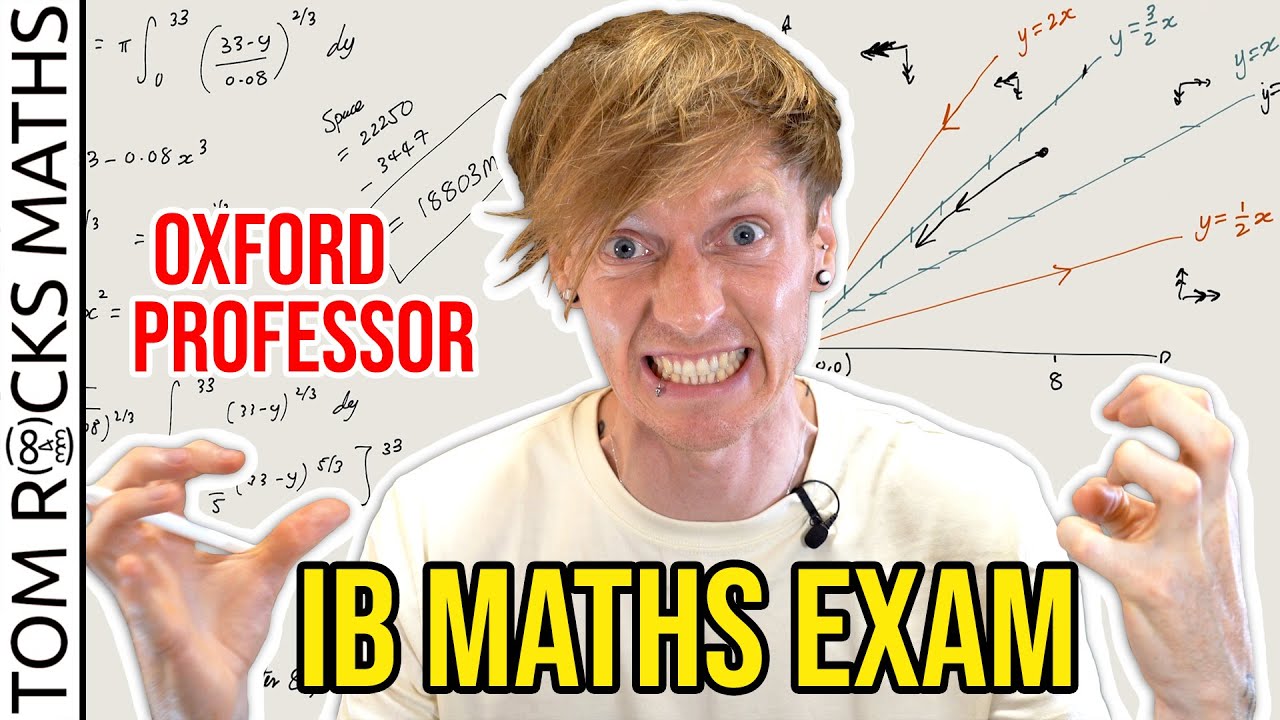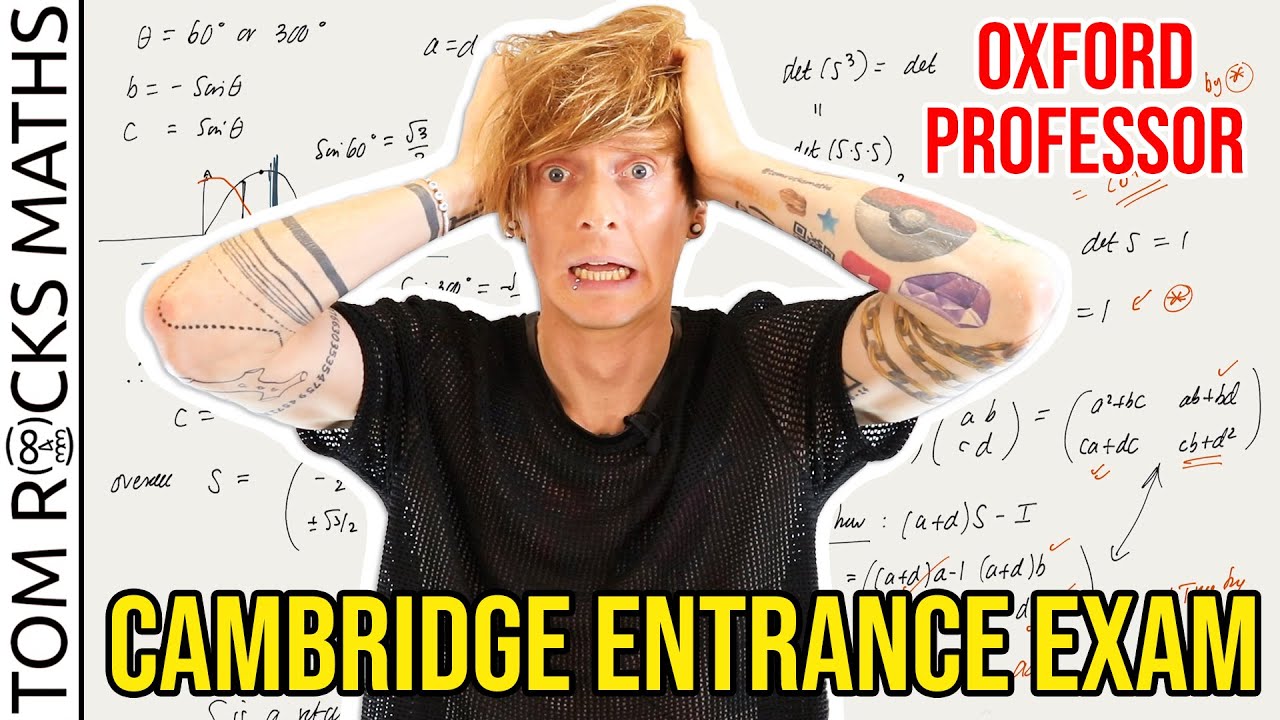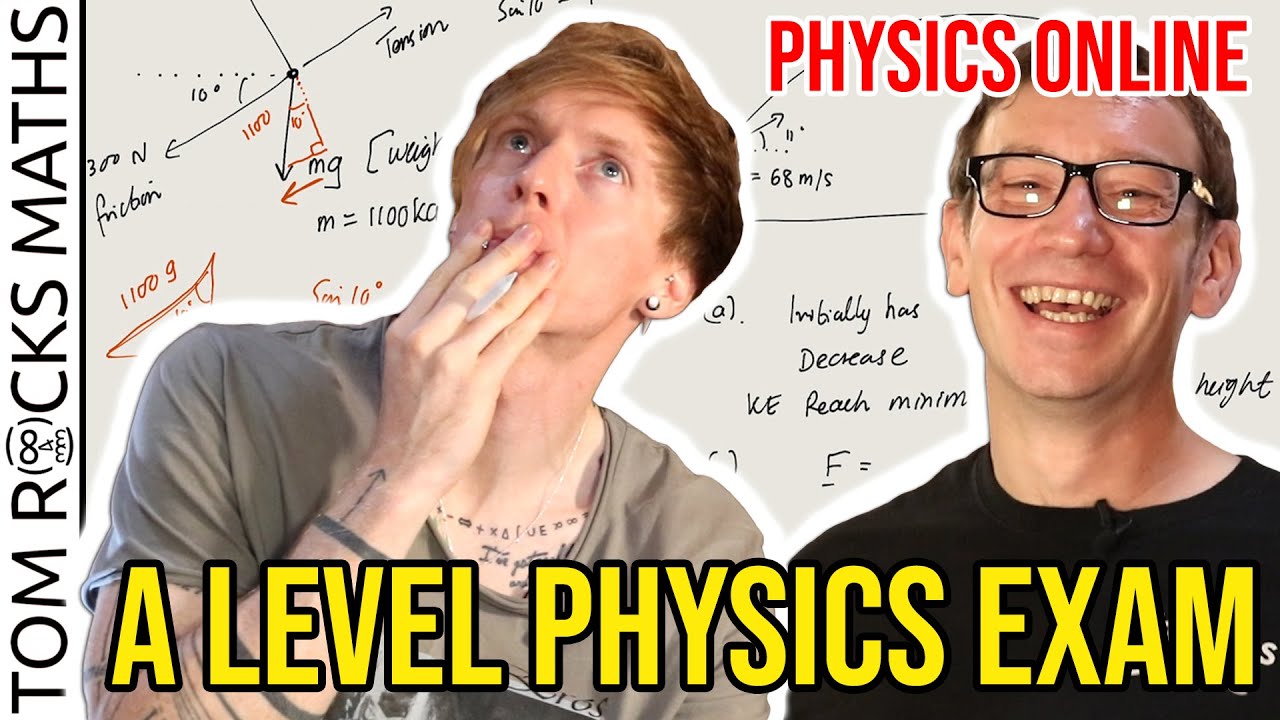[ASMR] THIS is What a University MATH Exam Looks Like
TLDRIn this engaging video, the host takes viewers through a typical university mathematics exam experience, showcasing a variety of math problems from calculus to linear algebra. The video delves into solving这些问题, providing insights into the process and logic behind each solution. The host's enthusiasm for mathematics is palpable as they navigate through complex problems with clarity and precision, offering viewers an accessible look into higher education's mathematical challenges.
Takeaways
- 📚 The video provides an insight into what a university mathematics exam looks like in the UK, specifically focusing on first-year mathematics papers.
- 🌟 The presenter shares their enthusiasm for mathematics and their experience as a university student studying the subject.
- 📝 The video covers a range of topics within mathematics, including calculus, linear algebra, complex numbers, combinatorics, and geometry.
- 💡 The presenter demonstrates problem-solving techniques for various math problems, such as limits, derivatives, and integrals in calculus.
- 🔢 The importance of understanding the fundamentals of mathematics is emphasized, as it can be relevant to high school students and university freshmen alike.
- 🎓 The structure and format of university exams are discussed, including the balance between exam scores and internal assessments.
- 📈 The video showcases how to approach solving problems step by step, highlighting the process and thought patterns involved in mathematical problem-solving.
- 🤔 The presenter encourages viewers to engage with the problems and attempt to solve them along with the video, promoting active learning.
- 🌐 The video aims to support the presenter's educational channel and reach a milestone of 100,000 subscribers.
- 👍 The presenter appreciates viewer engagement and support, urging them to like the video and subscribe to the channel for more content.
- ✨ The video concludes with a thank you to the viewers and an invitation for feedback on the content covered, as well as suggestions for future topics.
Q & A
What is the main focus of the video?
-The main focus of the video is to provide an insight into what a university math exam looks like and to solve various math problems from the exam, specifically from first-year mathematics courses.
What type of math paper is being discussed first in the video?
-The first math paper discussed in the video is a Calculus paper.
How many questions are there in the Calculus paper mentioned in the video?
-There are eight questions in the Calculus paper.
What is the general time given to complete an exam like the one discussed in the video?
-The general time given to complete an exam like the one discussed in the video is about two hours.
What is the second paper discussed in the video about?
-The second paper discussed in the video is an introductory course to university-level mathematics, covering a variety of topics including combinatorics, algebra, matrices, and geometry.
What is the significance of the limit in the context of the video?
-In the context of the video, limits are used to evaluate the behavior of functions, particularly as the input (x) approaches a certain value. They are a fundamental concept in calculus.
How does the video demonstrate the process of solving math problems?
-The video demonstrates the process of solving math problems by walking through each question step-by-step, explaining the reasoning behind each step, and showing the calculations involved.
What is the role of the domain and range in the function discussed in the video?
-The domain of the function is the set of all possible input values (x), which in this case is the set of real numbers. The range is the set of possible output values the function can have. In the video, it is mentioned that for the sine function, the range is between -1 and 1, inclusive.
What is the significance of the chain rule in the video?
-The chain rule is significant in the video as it is used to find the derivative of a composite function. It is demonstrated in the video by differentiating a function that involves the cosine of the sine of x.
How does the video address the concept of continuity in functions?
-The video addresses the concept of continuity by explaining that for a function to be continuous, it must be defined at a certain point, and the left and right limits at that point must equal the function's value at that point.
What is the purpose of the video in relation to the creator's studies?
-The purpose of the video is to showcase the type of papers and exams that math students at the university level have to take and study. The creator is studying math and finds it enjoyable to share this aspect of their education with the audience.
Outlines
📚 Introduction to University Exam and ASMR Math Video
The speaker welcomes viewers to an ASMR video focused on a university math exam. They explain that the video will showcase what a university exam looks like and involve solving math problems from the exam. The speaker encourages viewers to like the video and subscribe to the channel, mentioning their goal of reaching 100,000 subscribers. They discuss their inspiration for the video, which stems from their experience studying maths at university and wanting to share the乐趣 (fun) of math with the audience. The speaker provides an overview of what university entails, particularly in the UK, and introduces the specific papers they will cover: a calculus paper and a general mathematics introductory course.
📈 Exam Breakdown: Calculus Paper
The speaker delves into the specifics of the calculus paper, explaining the structure of exams in Scottish universities. They detail the balance between exam and coursework marks, the typical time allotted for exams, and the format of the calculus paper, which includes eight questions worth 10 marks each. The speaker also discusses the second paper, which covers a range of topics including combinatorics, algebra, matrices, and geometry. They express hope that high school students finding the video relevant and helpful for their own math studies.
🔢 Solving Calculus Problems
The speaker begins solving the first question from the calculus paper, which involves functions f and g. They explain the process of finding f minus g and f composed with g, using the sine function and x cubed minus five. The speaker then moves on to questions about the domain and range of f, and limits involving x squared plus expressions. They demonstrate the steps and reasoning involved in solving these calculus problems, aiming to make the process clear and understandable for the viewers.
📊 Further Calculus and Limits
Continuing with the calculus paper, the speaker tackles more questions on limits, including evaluating expressions as x tends to one and working with sine squared x plus cos squared x. They apply mathematical concepts such as factorization and the use of L'Hôpital's rule to solve the limit problems. The speaker also touches on the topic of function continuity, explaining the conditions for a function to be continuous at a point and applying this to the given function.
📝 Differentiation and Integrals
The speaker transitions to questions involving differentiation and integrals. They discuss the chain rule for finding the derivative of a composite function, such as cos of sine x, and the product rule for differentiating a function like x squared e to the minus two x. The speaker also addresses a differential equation, showing how to verify if a given function y equals x squared e to the minus two x is a solution. They demonstrate the process of differentiating the function and simplifying the result to show that it equals zero, confirming the solution.
🌟 Area Calculation and Integration
The speaker tackles integration problems, starting with finding the area between the sine curve and the y-axis for x between zero and pi. They correctly calculate the area using the integral of sine x and evaluate it to get two square units. Next, they approach an integration by parts problem, evaluating the integral of x e to the x with the help of the integration by parts formula. The speaker simplifies the expression and arrives at the correct result, demonstrating their proficiency in calculus techniques.
🎲 Combinatorics, Complex Numbers, and Matrices
The speaker moves on to a more general mathematics paper, covering topics like combinatorics, complex numbers, and matrices. They calculate the number of outcomes with exactly five heads when a coin is tossed 15 times using combinatorics, and deal with complex numbers by rationalizing the denominator and expressing the result in the form a plus bi. The speaker also solves a system of linear equations using elementary row operations, leading to the values of a, b, and c.
📐 Vector Product and Conclusion
In the final part of the video, the speaker calculates the vector product of two given vectors a and b. They explain the process of finding the cross product and computing the determinant to arrive at the answer. The speaker wraps up the video by thanking the viewers for their support and expressing their enjoyment in creating math-related content. They encourage viewers to provide feedback and suggest topics for future videos.
Mindmap
Keywords
💡University Exam
💡Calculus
💡Limits
💡Derivatives
💡Integrals
💡Complex Numbers
💡Combinatorics
💡Differential Equations
💡Vector Product
💡Elementary Row Operations
Highlights
The video provides an in-depth look into what a university math exam entails, specifically focusing on calculus and introductory university mathematics.
The speaker is currently in their fourth year of studying mathematics at the university, offering a unique perspective on the material.
The calculus paper covers a range of topics including limits, continuity, differentiation, and integration.
The introductory mathematics paper includes a variety of topics such as combinatorics, algebra, matrices, and geometry.
The video demonstrates the process of solving complex math problems, offering insights into the critical thinking and problem-solving skills required in mathematics.
The speaker's approach to explaining each problem is methodical and detailed, ensuring that viewers can follow along and understand the concepts.
The video showcases the importance of understanding the fundamentals of mathematics, such as the concept of limits in calculus.
The speaker emphasizes the practical applications of mathematics, such as using calculus to solve real-world problems.
The video highlights the collaborative nature of learning, encouraging viewers to participate by attempting to solve problems along with the speaker.
The speaker's enthusiasm for mathematics is evident, providing a positive and engaging learning experience for viewers.
The video touches on the importance of a solid educational foundation, with the speaker referencing high school mathematics in relation to university-level work.
The speaker's use of visual aids, such as writing equations and problems on paper, helps to clarify complex concepts for viewers.
The video concludes with a discussion on the vector product, demonstrating the application of geometry in mathematics.
Throughout the video, the speaker maintains a casual and approachable tone, making the content accessible to a wide audience.
The video serves as a valuable resource for those interested in pursuing a degree in mathematics or looking to improve their math skills.
Transcripts
Browse More Related Video

Oxford University Mathematician takes High School IB Maths Exam

All the Math Classes that Math Majors Take

Oxford University Mathematician takes Cambridge Entrance Exam (STEP Paper) PART 1

Can an Oxford University Mathematician solve a High School Physics Exam? (with @PhysicsOnline)

Oxford Maths Admissions Interview Question with @blackpenredpen

Oxford Mathematician Challenges Physics Teacher to A Level Maths Exam
5.0 / 5 (0 votes)
Thanks for rating: